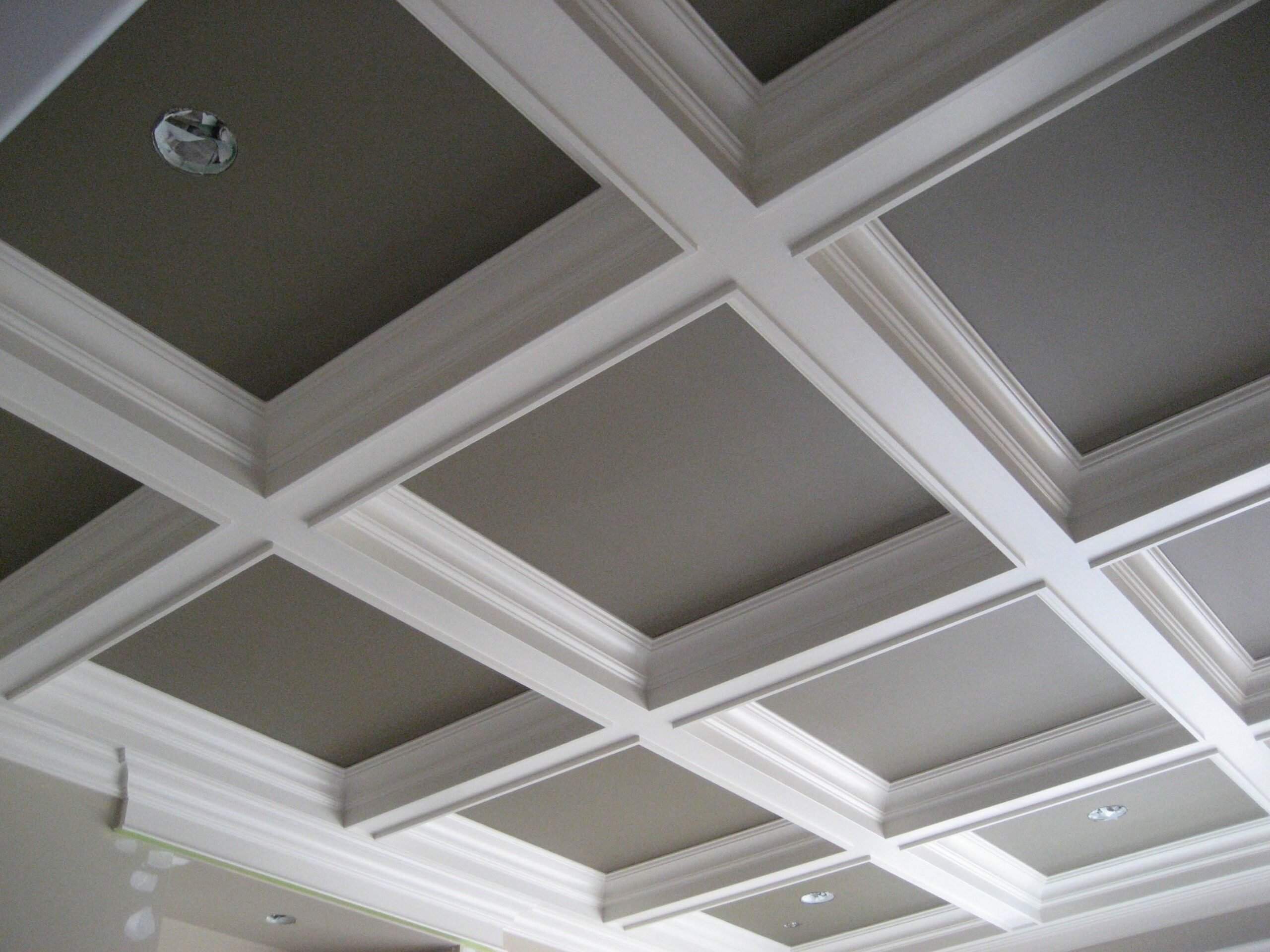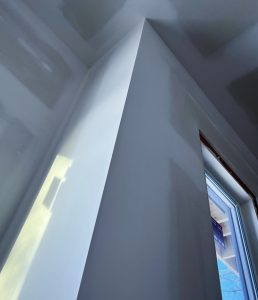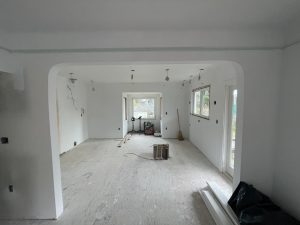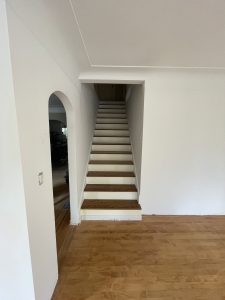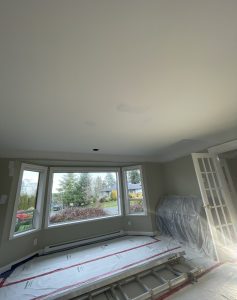Drywall installation stands as a transformative phase in the metamorphosis of structures, turning stark interiors into refined, livable spaces. Beneath the ostensibly uncomplicated process, however, lie potential stumbling blocks that can compromise the final aesthetic and structural integrity. This essay embarks on a comprehensive exploration of the intricacies involved in drywall installation, unraveling the common mistakes encountered and providing nuanced insights on how to navigate these challenges for a flawless finish.
Inadequate Planning and Measurement:
At the heart of any triumphant drywall installation lies the bedrock of meticulous planning and precision in measurement. Often overlooked is the critical role of comprehensive planning, leading to sheets that don’t snugly fit, resulting in irregular surfaces. Taking the time to measure with exactitude, factoring in openings and corners, and methodically planning the layout emerges as a linchpin. Precision at this initial stage sets the tenor for a seamless and efficient installation process.
Delving further into planning, considerations extend beyond mere measurements. Understanding the structural layout of the building, accounting for electrical outlets, light switches, and potential obstacles, ensures that the drywall seamlessly integrates into the architecture. This comprehensive approach not only prevents potential issues during installation but also streamlines the overall aesthetic appeal.
Moreover, the meticulous planning of the layout serves not only functional but also environmental purposes. Proper planning minimizes waste, ensuring that each sheet of drywall is utilized optimally. This not only aligns with sustainable construction practices but also contributes to cost-effectiveness for the project.
Neglecting Proper Stud Placement:
The structural soundness of drywall is intrinsically tied to secure anchoring on underlying studs. A prevalent mistake is the inadvertent oversight or inaccurate marking of stud locations, potentially leading to sheets that sag or develop cracks over time. The utilization of stud finders and the marking of their positions before embarking on the installation process is non-negotiable. This step forms the bedrock of a secure foundation, preempting potential structural issues in the future.
Diving deeper into the importance of proper stud placement, considerations extend to the distribution of screws. Evenly spaced screws ensure uniform support, mitigating the risk of sagging or bulging in the installed drywall. Comprehending the principles of stud placement and spacing emerges as a fundamental aspect of achieving a robust and enduring result.
Moreover, advancements in technology have introduced innovative solutions, such as smart stud finders, which not only locate studs but also offer insights into potential obstacles behind the walls. Incorporating such tools into the installation process enhances precision and contributes to a more streamlined and technologically advanced approach.
Poorly Executed Taping and Mudding:
The visual allure of drywall hinges largely on the adept execution of taping and mudding. A prevalent error is rushing through these stages, resulting in visible seams, bumps, and an overall unprofessional appearance. Patience emerges as the guiding principle during this phase; each layer of mud must be allowed to dry thoroughly before progressing to the next. Additionally, the interlude of sanding between coats is paramount to attaining a smooth, polished finish.
Zooming in on the art of taping and mudding, the quality of tools plays a pivotal role. Investing in high-grade taping knives, mud pans, and sandpaper contributes significantly to the overall outcome. Additionally, staying abreast of evolving techniques and trends in the realm of drywall finishing is imperative. Online tutorials, workshops, and collaboration with seasoned professionals offer invaluable insights into the nuances of achieving a flawless finish.
Furthermore, the advent of specialized mud mixes tailored to different applications has revolutionized the taping and mudding process. Exploring these innovations allows practitioners to tailor their approach to specific project requirements, ensuring optimal results.
Ignoring Environmental Factors:
The ambient conditions during drywall installation exert a considerable influence on the success of the project. A common oversight is neglecting factors such as humidity levels, which can lead to complications like bubbling tape or difficulties in achieving a proper finish. Different types of drywall are engineered to withstand specific environmental conditions. For instance, opting for moisture-resistant drywall in areas prone to high humidity, such as bathrooms or kitchens, is a strategic decision.
Expanding on environmental considerations, the timing of the installation in relation to seasonal variations is crucial. Drywall is susceptible to expansion and contraction based on temperature and humidity fluctuations. Installing drywall during extreme weather conditions may result in issues such as warping or cracking. A nuanced understanding of these environmental factors empowers practitioners to make informed decisions, ensuring the longevity and stability of the installation.
Additionally, exploring eco-friendly alternatives and sustainable practices in drywall installation aligns with the broader trend of green construction. From recycled drywall materials to low-VOC (volatile organic compound) finishes, incorporating environmentally conscious choices contributes not only to the longevity of the installation but also to the broader ethos of sustainable construction.
Overlooking Safety Precautions:
Amid the meticulous attention to technique and precision, the aspect of safety during drywall installation is occasionally underestimated. Failure to employ protective gear, such as goggles and dust masks, exposes individuals to health hazards. The fine particles generated during cutting, sanding, and installation processes pose respiratory and ocular risks. Prioritizing safety measures, including the use of appropriate safety gear and ensuring adequate ventilation, is non-negotiable for creating a secure working environment.
Delving deeper into safety considerations, the weight and dimensions of drywall sheets necessitate a keen awareness of ergonomic practices. The physical demands of working with sheets overhead should not be underestimated. Implementing strategies such as proper lifting techniques, regular breaks, and enlisting assistance when handling large sheets contributes to a safer and more sustainable work environment.
Furthermore, staying informed about advancements in safety gear, such as respirators with improved filtration capabilities or ergonomic scaffolding systems, enhances the safety quotient of the installation process. Embracing a culture of continuous improvement in safety practices not only safeguards the well-being of individuals involved but also contributes to the overall efficiency and success of the project.
Conclusion:
In the realm of drywall installation, steering clear of common mistakes transcends the realm of technique; it is a testament to the unwavering commitment to achieving a professional finish. Meticulous planning, attention to detail, and strict adherence to safety protocols serve as the cornerstones of success in this intricate process. By learning from the common pitfalls discussed—whether it be inadequate planning, stud neglect, taping and mudding oversights, environmental ignorance, or safety lapses—one can transform challenges into opportunities for mastery, turning blank canvases into exquisitely adorned spaces.
In summary, the journey of drywall installation is not merely about sheets and screws; it is a tapestry woven with precision, care, and an unwavering commitment to perfection. Each step, from the initial planning to the final execution, plays a pivotal role in determining the longevity and aesthetic appeal of the final result. Embracing the nuances of the craft ensures that drywall installation transcends the mundane and becomes an art form in itself, creating spaces that not only stand the test of time but also exude a timeless elegance.

